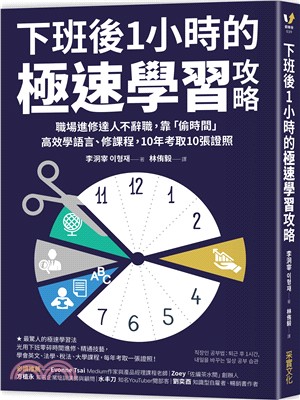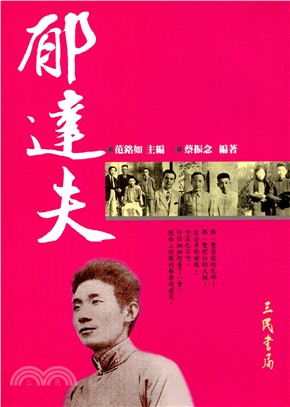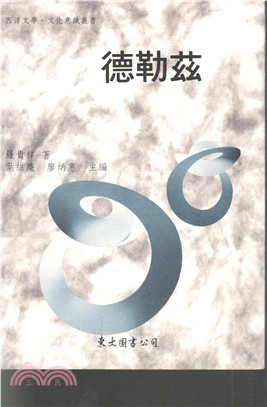化工專業英語(英漢雙語版):化學工程與能源化學工程方向(簡體書)
- 系列名:普通高等教育“十二五”規劃教材
- ISBN13:9787122240101
- 替代書名:Professional English for Chemical Engineering (English-Chinese Bilingual Edition): Specialized in Chemical Engineering and Energy Chemical Engineering
- 出版社:化學工業出版社
- 作者:姚頌東
- 裝訂/頁數:平裝/202頁
- 規格:25.8cm*18cm (高/寬)
- 版次:一版
- 出版日:2023/08/01
商品簡介
名人/編輯推薦
2..《化工專業英語》的編寫分為純英文和中文兩大部分,中文與英文部分內容嚴格對照但又各自獨立。在英語部分,所設計的專業詞彙採用英文單詞註解,讓學生在英語思維模式下鞏固專業英語水平和能力。中文部分對文中的漢語詞彙進行了英文翻譯。課文的附錄部分包括全書的總詞彙表、煤化工專業英語詞彙、基本元素詞彙表。
序
隨著外語教學在人才培養中被日趨重視,以及為滿足了解專業國際現狀的需求,相關專業英語教材需求日趨突出。本教材的編寫,不僅可以進一步培養和提高學生的專業基本素養,而且很大程度上能使高校學生在英語水平和專業能力上得以補充和延伸。此外,隨著我國對外交流的拓展和深入,國外留學生的漢語教學,尤其是專業漢語教學也越來越受到關注。編寫這本能供中外學生共同學習化工專業知識的專業外語課的教材,旨在滿足“化學工程與工藝”專業未來發展、“能源化工專業”的專業需求以及潛在的對外交流“專業化工專業漢語”的不同需求。
本教材參考了相關專業領域的權威英文原版書籍。針對本科生及研究生的專業英語接受能力,對一些語法句法複雜、生僻,專業詞彙偏多的段落進行了簡單化處理,使之在保留專業英語原有語境基礎上按通用英文語法進行重新編排,讓學生通過對專業英語的閱讀,逐漸達到能夠直接閱讀專業英語書籍和外文文獻的水平。
教材的編寫分為英文和中文兩大部分,中文與英文部分內容嚴格對照但又各自獨立。在英文部分,所設計的專業詞彙採用英文單詞註解,讓學生在英語思維模式下鞏固專業英語水平和能力。中文部分對文中的漢語詞彙進行了英文翻譯。教材的附錄部分包括全書的總詞彙表、煤化工專業英語詞彙表、基本元素詞彙表。
全書共分四個部分、十二個單元。每一單元分為精講和閱讀兩個部分,兩者篇幅一致、難度相近、領域相同,可適用於不同學時的課堂教學。每篇課文後麵包含專業詞彙、專有名詞詞組和重點問題,便於學習、理解和記憶。本教材注重從化學工程與工藝、能源化學工程角度選擇專業閱讀材料,所選文章涉及煤化工、石油化工、天然氣化工、C1化學、甲醇化學、生物質轉化技術、新能源、燃料電池,氫能等領域。本教材可作為化工及能源化學工程類高年級本科生及研究生的專業英語教材,還可供能源化學工程與化學化工專業的科技人員及中等英語水平的其他人員自修參考。
目次
Unit1 Properties of Coal1
Reading Material 1 Situation of China's Coal5
Exercise 18
第一部分煤化工10
第一單元煤的性質10
閱讀材料1中國煤炭資源12
單元練習114
Unit2 Coal Gasification16
Reading Material 2 Upgrading Technology of LowGrade Coal20
Exercise 224
第二單元煤氣化26
閱讀材料2低階煤加工技術28
單元練習230
Unit3 Direct Coal Liquefaction32
Reading Material 3Pollution Control and CO2 Capture35
Exercise 340
第三單元煤直接液化41
閱讀材料3粉煤燃燒及污染控制43
單元練習346
Part 2Petrochemical47
Unit 4Crude Oil and Refinery Products47
Reading Material 4Atmospheric and Vacuum Crude Oil Distillation51
Exercise 454
第二部分石油化工56
第四單元石油及石油煉製產品56
閱讀材料4常減壓蒸餾59
單元練習461
Unit 5Fluid Catalytic Cracking62
Reading Material 5Catalytic Reforming66
Exercise 569
第五單元流化催化裂化70
閱讀材料5催化重整73
單元練習574
Unit 6Hydrotreating Process76
Reading Material 6Distillate Hydrocracking80
Exercise 684
第六單元加氫處理工藝86
閱讀材料6餾分油加氫裂化88
單元練習690
Part 3Natural Gas and C1 Chemistry91
Unit 7Natural Gas Processing and Transportation91
Reading Material 7Natural Gas Hydrate95
Exercise 799
第三部分天然氣及C1化學101
第七單元天然氣加工及運輸101
閱讀材料7天然氣水合物104
單元練習7106
Unit 8FischerTropsch Synthesis107
Reading Material 8Natural Gas in China111
Exercise 8114
第八單元費托合成116
閱讀材料8中國天然氣現狀118
單元練習8121
Unit 9Methanol Production and Application122
Reading Material 9Atmospheric Pollution and Greenhouse Effect125
Exercise 9129
第九單元甲醇生產及應用131
閱讀材料9大氣污染與溫室效應133
單元練習9136
Part 4New Energy137
Unit 10Renewable Energy137
Reading Material 10New Energy Vehicle141
Exercise 10145
第四部分新能源147
第十單元可再生能源147
閱讀材料10新能源汽車149
單元練習10151
Unit 11Biofuel152
Reading Material 11Waste Biomass Sources156
Exercise 11159
第十一單元生物燃料160
閱讀材料11廢棄生物質資源163
單元練習11165
Unit 12Fuel Cell166
Reading Material 12Hydrogen Energy170
Exercise 12173
第十二單元燃料電池175
閱讀材料12氫能178
單元練習12180
Appendix(附錄)181
Appendix 1Vocabulary181
Appendix 2Coal Chemical Vocabulary194
Appendix 3Petrochemical Vocabulary196
Reference203
書摘/試閱
Gasification process
Coal undergoes a series of chemical and physical changes in a gasification process. At drying stage when coal is heated at temperature higher than 100 ℃, most of the moisture is driven out. At devolatilization stage when coal temperature is increased to 500 ℃, significant devolatilization begins. More volatile materials are released at this stage. Liable bonds between the aromatic clusters in coal structure are cleaved, generating much smaller fragments. Fragments with low molecular weights will vaporize and escape from the coal particle to constitute light gases and tar. At gasification stage when coal temperature is higher than 900 ℃, maximum volatile yield occurs. More gas products were produced in the presence of CO, CO2, CH4, H2 and H2O. The yield and composition of volatile compounds depend on the heating rate and final temperature.Volatile yield at rapid-heating rates is normally 20-40% higher than that at slow-heating rates.
Gasifier
According to the fluidization regime, coal gasifiers are generally classified as moving bed, fluidized bed and entrained flow bed.
a) Moving-bed gasifier
Lurgi gasifier is the oldest gasifier technology that is still widely used in industries. Coal is fed into an atmospheric-pressure-bunker above the gasifier. A valve on the bottom of bunker will be opened when the bunker is full, dropping the coal into a coal lock. Then, the valve will be closed and coal lock is pressured until it reaches the reaction pressure of the gasifier, typically 2.4 to 3.5 MPa. After that, a valve at the bottom of coal lock will be open, dropping the coal into the gasifier. BGL (British Gas Lurgi) gasifier is a slagging version of a Lurgi gasifier. Instead of a grate at the bottom of the gasifier, oxygen and steam are injected into the slag layer through tuyeres. A stirrer near the top of the bed allows the use of caking coals.
Lurgi gasifier BGL gasifier Winkler gasifier
b) Fluidized-bed gasifier
Winkler gasifier, commercialized in 1926, was the first industrial fluidized-bed gasifier technology. In the bubbling fluidized bed regime, coal is fed into the gasifier at atmospheric pressure. At the same time, The gas consisting of steam and air (or oxygen) is splitted into two separated streams which are fed into the gasifier. The stream from the bottom will fluidize the solid coal particles and react with the solid coal combined with another stream from the side. About 70% of the ash is carried by fluidizing gas and is taken into the head space. The low operating temperature and pressure of the winkler gasifier limits the throughput of the gasification. Lignite and sub-bituminous coal with high ash fusibility temperatures are considered as ideal feedstocks under low operating temperatures .
c) Entrained flow gasifiers
The first commercial application of entrained flow coal gasifier was developed by Texaco in 1983. The standard method of feeding coal into a high pressure entrained flow gasifier is to finely grind the coal and then mix it with water to form a pumpable slurry. The slurry and oxygen are injected into the top of the gasifier, and the gas/solid/slag mixtures flow downward. The coal/water slurry feed technique works well with bituminous coals. When using lower grade coals, the water/coal ratio of the slurry feed is often far in excess of optimum due to the high intrinsic moisture in lower grade coals. Therefore, high water content of the slurry feed had to be vaporized by coal pyrolysis.
d) Unconventional gasifiers
NRG plasma gasifier can be served as an alternative coal gasifier. It utilizes a plasma torch to gasify a solid feedstock. This kind of gasifier is especially attractive for more difficult gasified feedstocks, such as municipal solid waste (MSW). Currently, the largest installed NRG gasifier is the Eco-valley waste-to energy facility in Japan, which gasifies 180 t/d of MSW and automotive shredder waste.
Underground coal gasification
In an underground coal gasification (UCG) process, untapped coal-seams are reacted with insufficient oxygen to create syngas underground. An oxidant, usually air, flows through an injection well into a cavity in a coal seam. The oxygen and water within the coal seam react with the coal to produce syngas, which is withdrawn through a production well. Compared to the above-ground gasifiers, UCG offers a considerable capital cost savings by canceling the gasifier and a considerable operating cost savings by eliminating the cost of mining coal. In UCG process, steam may be generated because some coal seams are aquifers. These steams are benefit for char gasification. Some of them are consumed in the water-gas-shift reaction to produce H2 and CO2 from H2O and CO. In addition, partial of H2 will react with carbon to produce CH4,which can enhance the calorific value of the gas.
Entrained flow gasifiers
Specialized English Words
Devolatilization
Liquefaction.
Slagging To obtain a mixture of shale, clay, coal dust, and other mineral waste produced during coal mining.
Tuyere A water-cooled nozzle through which air is blown into a cupola, blast furnace, or forge.
Pyrolysis Decomposition or transformation of a compound caused by heat.
Seam A line of junction formed by sewing together two pieces of material along their margins.
Expressions and Technical Terms
Moving bed Granulated solids in a process vessel that are circulated either by mechanically or by gravity flow; used in catalytic and absorption processes.
Fluidized bed A cushion of air or hot gas blown through the porous bottom slab of a container which can be used to float a powdered material as a means of drying, heating, quenching, or calcining the immersed components.
Entrained flow bed In the entrained flow gasifier a dry pulverized solid, an atomized liquid fuel or a fuel slurry is gasified with oxygen (much less frequent: air) in co-current flow. The gasification reactions take place in a dense cloud of very fine particles.
BGL
(British Gas Lurgi ) The principle of a slagging fixed-bed gasifier basing upon the British Gas/Lurgi (BGL) technology is predominantly applied for the generation of high-quality syngas which is free of any attendant substances and can be processed to various product.
Winkler gasifier High-temperature winkler gasifier is one of the oldest gasification technologies which was developed by Rheinbraun in Germany in 1926.
Caking coals When many bituminous coals are heated, they soften and form a plastic mass that swells and resolidifies into a porous solid. Coals that exhibit such behavior are called caking coals.
Notes
① Coal gasification: Coal gasification is the process of producing syngas–a mixture consisting primarily of methane (CH4) carbon monoxide (CO), hydrogen (H2), carbon dioxide (CO2) and water vapor (H2O)–from coal and water, air and/or oxygen.
② Coal gasifier: Several types of gasifiers are currently available for commercial use: counter-current fixed bed, co-current fixed bed, fluidized bed, entrained flow, plasma, and free radical gasifier.
③ Underground coal gasification (UCG): UCG takes advantage of the same chemical reactions of coal to produce product gases, as those occurring in conventional gasifier reactors. The main difference is that in UCG the underground coal seam itself becomes the reactor, so that the gasification of the coal takes place underground instead of in a manufactured gasification vessel at the surface.
Reading Material 2: Upgrading T
收起全部↑
主題書展
更多主題書展
更多書展本週66折
您曾經瀏覽過的商品
購物須知
大陸出版品因裝訂品質及貨運條件與台灣出版品落差甚大,除封面破損、內頁脫落等較嚴重的狀態,其餘商品將正常出貨。
特別提醒:部分書籍附贈之內容(如音頻mp3或影片dvd等)已無實體光碟提供,需以QR CODE 連結至當地網站註冊“並通過驗證程序”,方可下載使用。
無現貨庫存之簡體書,將向海外調貨:
海外有庫存之書籍,等候約45個工作天;
海外無庫存之書籍,平均作業時間約60個工作天,然不保證確定可調到貨,尚請見諒。
為了保護您的權益,「三民網路書店」提供會員七日商品鑑賞期(收到商品為起始日)。
若要辦理退貨,請在商品鑑賞期內寄回,且商品必須是全新狀態與完整包裝(商品、附件、發票、隨貨贈品等)否則恕不接受退貨。

































